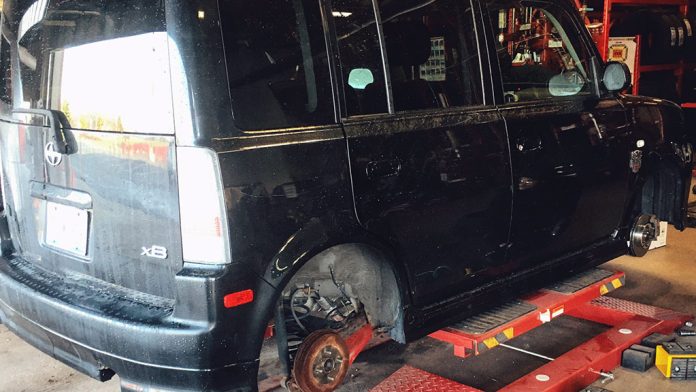Unexpected car troubles can disrupt your schedule and safety in an instant. From flat tires to cracked windshields, emergency auto repairs are often inevitable, but knowing how to handle them can make all the difference. Understanding these common scenarios helps drivers stay prepared and maintain vehicle performance. With the right knowledge and a commitment to continuous improvement, you can minimize downtime and stress when these issues arise. Here are the top four types of emergency auto repairs that you may need—and how to respond effectively.
1. Flat Tire Replacement
A flat tire can occur at any time, whether due to sharp debris, low tire pressure, or simple wear and tear. Recognizing the signs—such as uneven steering, vibration, or a sudden drop in ride height—is crucial for early intervention. Immediate action prevents further damage to your wheels or suspension system.
If a tire can’t be repaired and a replacement is necessary, the turnaround time largely depends on part availability. When a specific wheel needs to be ordered, the process can take approximately two to three days before installation is complete. Awareness of this timeline helps drivers plan ahead and avoid frustration during the repair process.
Routine tire inspections and pressure checks support ongoing vehicle safety and handling improvement. Carrying a spare tire and knowing how to change it can save valuable time in a roadside emergency.
2. Cracked Windshield or Broken Auto Glass
Auto glass damage is more than a cosmetic issue — it poses serious risks to visibility and structural integrity. Even a small crack can expand over time, especially when exposed to temperature changes or road vibrations. It’s essential to address windshield damage promptly to avoid higher repair costs or full replacement.
About 30% of all auto insurance claims are related to windshield and auto glass damage, according to industry insights. This highlights how common—and costly—this type of emergency repair can be. Immediate attention restores visibility and improves your vehicle’s safety profile.
Drivers should regularly inspect their windshields and windows for chips or cracks and consult professionals for repairs before minor damage worsens.
3. Brake Failure
The braking system is arguably the most critical safety component in your vehicle. Warning signs of brake failure include squeaking or grinding noises, a spongy brake pedal, or longer stopping distances. Ignoring these signals can lead to complete brake failure, putting you and others at serious risk.
Effective braking performance results from consistent maintenance and timely part replacement, such as pads, rotors, and fluid. Drivers committed to regular inspections see noticeable improvement in braking response and driving confidence. Being proactive avoids emergencies and extends the life of your vehicle’s brake system.
Understanding how to respond in a brake failure situation — by downshifting, using the emergency brake, and steering safely to the shoulder — can significantly affect the outcome and safety.
4. Dead Battery
Few things are more frustrating than turning your key and hearing nothing. A dead battery is a common emergency that often happens with little warning. Dim headlights, slow cranking, or dashboard warning lights are clear signs your battery is on its last leg.
It is vital to have jumper cables on hand and know how to use them. Additionally, investing in regular battery testing can help prevent failure. Improving battery care — such as cleaning terminals and checking voltage — can significantly reduce the likelihood of getting stranded.
Interestingly, consumers more engaged with automotive content and services are significantly more likely to invest in preventive maintenance. According to marketing data, highly engaged customers spend up to 76 times more on advertised automotive services online, reinforcing the value of continuous improvement in vehicle ownership habits.
Maintenance habits like battery inspections not only prevent emergencies but also enhance the dependability of your vehicle over time.
In conclusion, emergencies on the road can strike without warning, but preparedness and knowledge go a long way. From flat tires and broken glass to brake failures and dead batteries, recognizing the signs early and acting promptly improves vehicle reliability and personal safety. By investing in proper maintenance and staying engaged with auto care, you can avoid unnecessary stress and keep your vehicle running smoothly, mile after mile.



